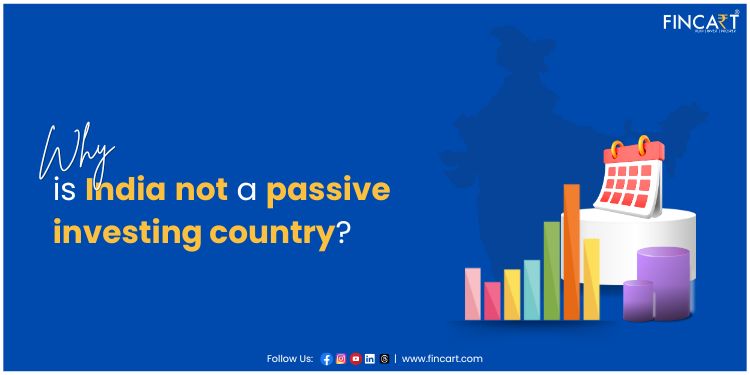Passive investing is an investment strategy that aims to replicate the performance of a specific market index or benchmark rather than trying to outperform it. The primary goal of passive investing is to achieve returns that closely match those of the chosen index, rather than actively selecting individual stocks or timing the market. This approach is gaining traction around the world and also in India, though it it’s not widely adopted yet.
The key features of passive investing include:
1. Index Tracking: Passive investors typically invest in funds that replicate the composition and performance of an index, such as the S&P 500 in the United States or the Nifty 50 in India. These funds buy and hold the same securities in the same proportions as the index they track.
2. Low Turnover: Passive investing strategies generally involve minimal buying and selling of securities. This contrasts with active investing, where fund managers frequently buy and sell stocks in an attempt to beat the market.
3. Lower Costs: Passive investing tends to have lower management fees and transaction costs compared to actively managed funds. Since passive funds do not require extensive research or active trading, they are often more cost-effective for investors.
4. Diversification: By investing in an index fund or ETF (Exchange-Traded Fund), passive investors gain exposure to a diversified portfolio of securities across various sectors and companies within the index. This diversification helps reduce the risk associated with individual stock selection.
5. Long-Term Focus: Passive investing is typically associated with a buy-and-hold strategy, where investors aim to capture the long-term growth of the overall market rather than seeking short-term gains or trying to time the market.
6. Transparency: The holdings of passive funds are usually transparent and publicly disclosed, allowing investors to see exactly which securities they own and in what proportions.
Ready to grow your wealth?
Partner with Fincart for expert investment planning and make your money work for you.
Reasons for India’s slower embrace of passive investing
India is not traditionally considered a passive investing country primarily due to several reasons rooted in its market characteristics and investor behavior. These are:
High Volatility: Indian financial markets tend to be more volatile compared to developed markets. This volatility can make passive investing strategies (which involve holding assets for the long term without actively managing them) less attractive to investors who may prefer actively managed funds to navigate market ups and downs.
Active Management Preference: Historically, Indian investors have shown a preference for active management due to the belief that active fund managers can outperform the market indices by picking stocks or sectors expected to perform well. This preference is partly cultural and stems from the belief that expert stock selection can lead to better returns.
Growth opportunities: India is seen as a growth market with emerging sectors and companies that may not be fully represented in market indices. Active managers can capitalize on these growth opportunities by actively choosing stocks they believe will benefit from India’s economic growth story.
Preference for Mid-cap and Small-cap: Many Indian investors are attracted to mid-cap and small-cap stocks because these segments have historically shown higher growth rates and have the potential to outperform large-cap indices like the Nifty and Sensex. Since most ETFs and index funds in India are benchmarked to large-cap indices, they do not capture the potential alpha from mid-cap stocks that active managers can exploit.
Regulatory environment: While the regulatory environment has been evolving to encourage passive investing (such as through the introduction of index funds and ETFs), the market infrastructure and investor awareness of passive strategies are still developing compared to more mature markets.
Commission structure: Historically, financial advisors and distributors in India often receive commissions (from fund companies) based on the products they sell to clients, including actively managed mutual funds. This commission-driven model incentivizes advisors to recommend products that generate higher commissions, which are typically actively managed funds with higher expense ratios compared to passive funds like index funds or ETFs.
Cultural factors: There is a cultural aspect where many Indian investors prefer tangible assets like real estate and gold over financial assets. This preference can influence investment behavior away from passive equity investments.
Awareness and Education: Awareness about passive investing strategies such as index funds and ETFs is relatively low compared to traditional active investing methods. Many investors, especially retail investors, may not fully understand the benefits of passive investing, such as lower costs, diversification benefits, and potential long-term returns.
The way forward
Despite these factors, the landscape is changing gradually with the introduction of more index funds and ETFs, growing awareness about the benefits of passive investing (like lower costs and diversification), and increasing participation from institutional investors and younger retail investors who are more inclined towards passive strategies. As the market matures and investor preferences evolve, passive investing in India may see greater adoption in the future.
In fact, during the five-year period of 2018 to 2023, India has witnessed a remarkable surge in the popularity of passive investing. The asset base (AUM) of passive funds has grown at an impressive annualized rate of 53%, soaring from Rs 80,755 crore in March 2018 to Rs 6.75 lakh crore by March 2023. Alongside this substantial increase in assets, the number of passive funds offered in the country has also surged from 90 to 349 during the same period. (Source: NSE)




